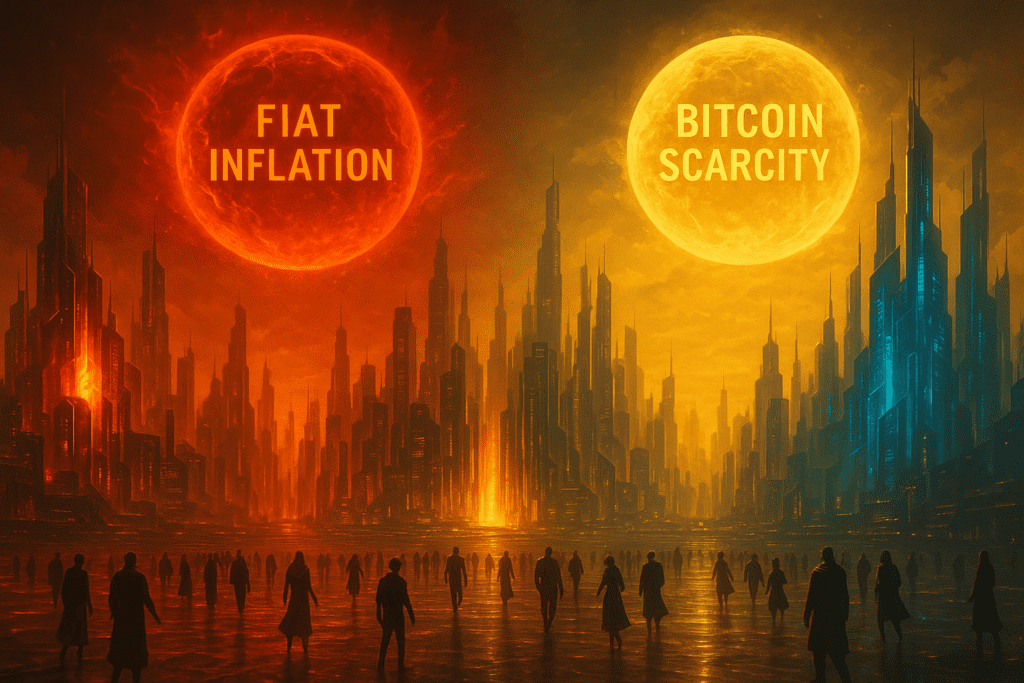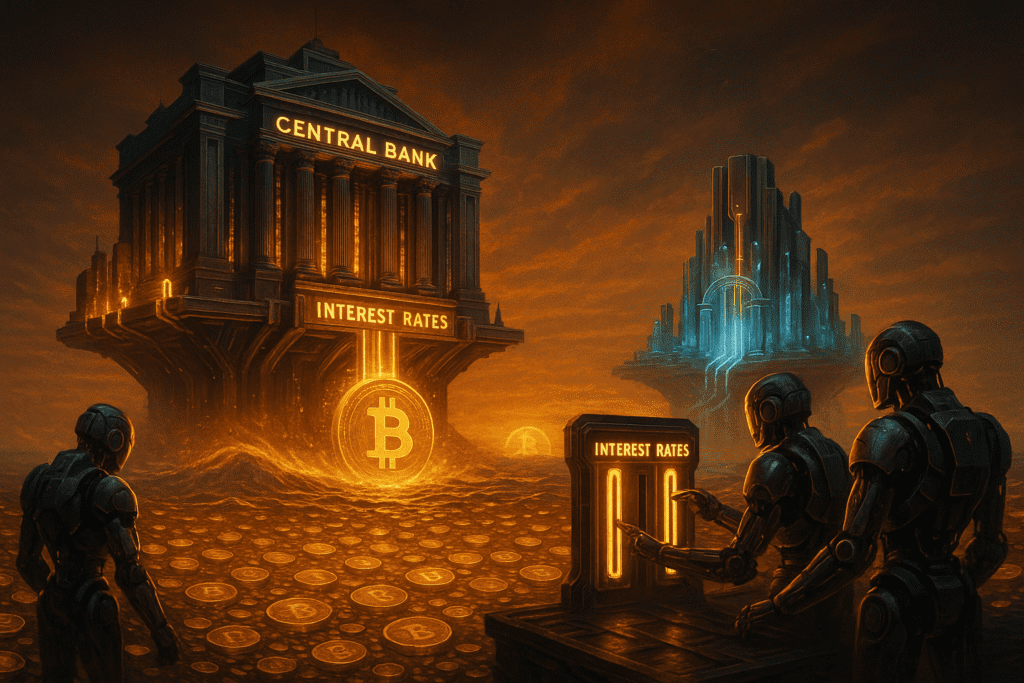How inflation and macroeconomic policy influence cryptocurrency prices — explore how Bitcoin, stablecoins, and DeFi respond to global financial shifts.
📘 Table of Contents
- Introduction: The Link Between Money and Crypto
- What Is Inflation and Why It Matters
- How Traditional Macroeconomics Influences Crypto Markets
- Bitcoin as “Digital Gold” During Inflation
- Stablecoins and the Search for Stability
- The Role of Central Banks and Interest Rates
- Global Crises and Market Reactions
- Forecasts: Inflation, Recession, and Crypto Adoption
- Conclusion: The New Face of Economic Freedom
Online advertising service 1lx.online
Introduction: The Link Between Money and Crypto
Cryptocurrencies didn’t appear in a vacuum — they were born from financial instability and distrust in central banks.
When traditional money loses purchasing power, people look for alternatives that are borderless, transparent, and deflationary by design.
Today, understanding how inflation and macroeconomic policy influence Bitcoin, Ethereum, and other assets is crucial for anyone entering the crypto world.
“Cryptocurrency is not against money — it’s against the misuse of money.”
What Is Inflation and Why It Matters
Inflation simply means your money buys less over time.
It’s caused when governments print more currency or when production costs rise faster than wages.
Historically, inflation has always been the hidden tax — eroding savings and trust in fiat systems.
Example:
- In the 1970s, U.S. inflation soared above 10%, pushing gold prices up.
- In 2021–2022, global inflation spiked again — this time driving retail investors toward Bitcoin.
Online advertising service 1lx.online
Cryptocurrencies like Bitcoin are designed to resist inflation, with a fixed supply of 21 million coins. That scarcity mimics digital gold — a hedge against money printing.
“When governments inflate, Bitcoin deflates — by design.”

How Traditional Macroeconomics Influences Crypto Markets
Macroeconomics studies how entire economies behave — through interest rates, employment, GDP, and fiscal policy.
Online advertising service 1lx.online
Every major move in crypto prices correlates with macro signals:
- Interest rate hikes → lower crypto prices.
- Money printing or stimulus → higher crypto demand.
- Strong dollar → weaker Bitcoin performance.
Why? Because liquidity drives markets. When central banks tighten money supply, investors pull funds from risky assets — including crypto.
When money floods in, speculative markets boom.
Key Indicators to Watch
- CPI (Consumer Price Index) — shows inflation pressure.
- Federal Funds Rate — sets the global cost of borrowing.
- U.S. Dollar Index (DXY) — tracks dollar strength vs other currencies.
- Unemployment Data — signals economic slowdown or recovery.
“Crypto doesn’t exist outside macroeconomics — it reacts faster to it.”
Bitcoin as “Digital Gold” During Inflation
Bitcoin is often called digital gold because both are scarce and decentralized.
But while gold requires mining in the ground, Bitcoin mining happens through code and electricity.
When inflation rises, investors seek stores of value that central banks can’t manipulate. Bitcoin’s algorithmic scarcity makes it attractive — especially to younger generations who distrust fiat.
Between 2020 and 2025, institutional funds like BlackRock and Fidelity started holding BTC as an inflation hedge — a milestone that reshaped global finance.
“Gold was for our parents. Bitcoin is for our future.”

Stablecoins and the Search for Stability
While Bitcoin fights inflation through scarcity, stablecoins aim to mirror stability by pegging value to fiat currencies like the U.S. dollar.
Examples:
- USDT (Tether)
- USDC (Circle)
- DAI (MakerDAO)
Stablecoins bridge traditional finance and crypto — they let users park funds in a digital dollar during volatility or inflation spikes.
But they’re not without risks. When macro uncertainty grows, stablecoins face regulatory pressure and reserve scrutiny.
That’s why newer models like algorithmic stablecoins and CBDCs (Central Bank Digital Currencies) are gaining attention.
“In a world of inflation, stablecoins became the calm inside the storm.”
The Role of Central Banks and Interest Rates
Central banks control fiat money through monetary policy — mainly by changing interest rates.
These decisions ripple through every market, including crypto.
- Higher rates → capital flows to bonds and savings → crypto demand falls.
- Lower rates → cheap money chases risk → crypto prices surge.
In 2024 – 2025, the Federal Reserve and European Central Bank started exploring digital currencies (CBDCs) while adjusting inflation targets.
Their actions now directly influence Bitcoin cycles, DeFi yields, and even on-chain liquidity.
“When the Fed sneezes, crypto catches a cold — or sometimes a rally.”

Global Crises and Market Reactions
Pandemics, wars, and recessions have repeatedly proven how closely macroeconomics and crypto intertwine.
When banks fail or sanctions hit, decentralized assets shine:
- During 2022 inflation, global adoption jumped by 40%.
- After banking crises in 2023, stablecoin transfers surged to record highs.
- Nations with weak currencies — Argentina, Turkey, Nigeria — turned to Bitcoin and USDT as safe havens.
Crypto acts as a pressure valve for global finance, offering mobility where traditional systems freeze.
“When borders close, blockchain stays open.”
Forecasts: Inflation, Recession, and Crypto Adoption
Analysts expect inflation to remain above pre-pandemic levels through 2026.
If central banks struggle to stabilize economies, decentralized alternatives may accelerate in popularity.
Key Forecasts
- Moderate inflation (2–4%) → steady BTC accumulation trend.
- High inflation (>6%) → Bitcoin becomes preferred savings tool.
- Deflationary pressure → altcoins and DeFi projects grow as yield alternatives.
Emerging markets are likely to lead the next crypto adoption wave, as digital assets provide both liquidity and protection from unstable local currencies.
“Inflation made people investors — crypto made them independent.”
Conclusion: The New Face of Economic Freedom
Inflation exposes the weakness of centralized systems.
Macroeconomics explains the patterns, but crypto offers the solution.
Bitcoin, stablecoins, and decentralized finance now sit at the crossroads of monetary history — merging technology and economics into a single, borderless system.
“Crypto doesn’t fight inflation — it replaces the system that causes it.”
Our creator. creates amazing NFT collections!
Support the editors - Bitcoin_Man (ETH) / Bitcoin_Man (TON)
Pi Network (Guide)is a new digital currency developed by Stanford PhDs with over 55 million participants worldwide. To get your Pi, follow this link https://minepi.com/Tsybko and use my username (Tsybko) as the invite code.
Binance: Use this link to sign up and get $100 free and 10% off your first months Binance Futures fees (Terms and Conditions).
Bitget: Use this link Use the Rewards Center and win up to 5027 USDT!(Review)
Bybit: Use this link (all possible discounts on commissions and bonuses up to $30,030 included) If you register through the application, then at the time of registration simply enter in the reference: WB8XZ4 - (manual)
